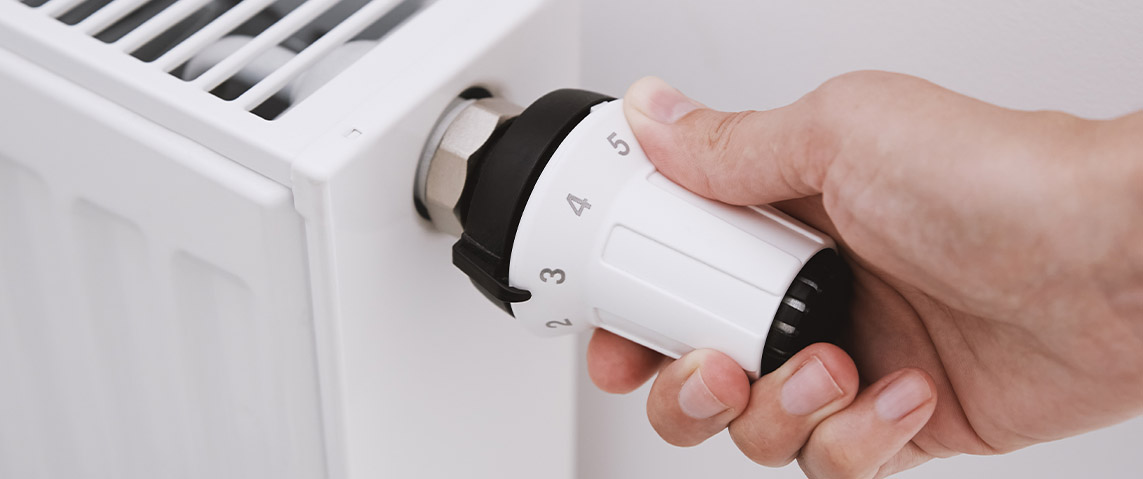Why is one radiator cold: Central Heating?

In this post, we'll cover
When the weather gets chilly, everyone feels the winter season is coming soon. It's time to check the heating system in your home. As the nights lengthen and the temperature goes down, we all depend on one object: the central heating system. Suppose radiators aren't heating evenly after a long period of inactivity. It can be highly annoying and frustrating to switch on your heating system only to realise radiators are ice cold even after running 10 min or more, all the more so if the prospect of a costly repair bill arises. Questions such as, Why is my downstairs radiator not working, and what can I do about it? These kinds of questions can come to mind.
With a few diagnoses, you can get your radiators back to heating your house as quickly and efficiently as possible. Most of the time, problems with your radiators are caused by a minor issue that can be fixed. So please look at these easy methods and follow them to warm up your home in no time.
Examine the Heating Condition in Radiators
A radiator heated on one side generally indicates that hot water can flow into the radiator but is trapped somewhere within the midway. If it appears that only one radiator is causing an issue, you can detach it and adequately clean it. The first step in getting your radiator functional is to inspect the entire heating system. Turn on the heat and walk round your house to see if it's simply one or numerous radiators that aren't working.
Moreover, check that the timer of your heating system is working correctly and that it is set to the right time. It's also a good idea to double-check that any wireless thermostats for your radiator are working correctly and haven't been turned down.
Check the bleed screw
Air can get trapped in your radiators, making them warm at the bottom but frigid at the top. If this is the situation, your radiators may need to be bled. So, gently unscrew the bleed screw with your radiator key until you hear a hissing sound. When the hissing sound stops and the water starts to flow from your radiator, close the bleed screw.
Radiators valves
Make sure your radiator valves are in good working condition. If the water pressure is not a problem, the next step is to inspect your radiator valves. Check that both the left and right radiator valves are open and that the radiator is switched on if it has a thermostatic valve (one that allows you to choose the temperature and regulates it continuously). Furthermore, thermostatic radiator valves can clog, causing your radiator to stop working.
If you suspect this is the case, contact a professional heating expert who will be able to assess the problem thoroughly and, if required, repair the valve. Your radiator should be nice and toasty in no time. Furthermore, an engineer or professional can analyse the situation before attempting to resolve it. The radiator in your home comprises several parts that work together to heat water and make your house warmer.
The thermostat on the radiator isn't functioning correctly.
When the radiators in your home are not working, you should check the thermostat on the radiators. It's not uncommon for the valves to get seized at higher temperatures. This is something you can examine by removing the valve's top cover. The valve is usually secured with a knurled nut, which you can undo with your hand.
Dripping radiator
A leak from the thermostatic radiator valve's connection to a pipe or radiator, or a leak from the pipe joint, could indicate that the nut has become loose. As a result, simply rotating it with a wrench can be enough to solve the problem.
At The Bottom of the Radiator, It's Cold
Accumulation of sludge made of rust and debris in your systems is frequently the cause of your radiator being cold at the bottom. Because this sludge is denser than water, it will sink to the bottom of your radiator, blocking heat flow and rendering the bottom frigid. The sludge must be flushed to cure a chilly radiator bottom. Switch off your heating system and each valve in the radiator to separate it from the entire system. The radiator can then be bled and drained, removed to flush out the sludge, and reattached.
Sufficient water pressure
If your radiator or heating system are in good working condition, the water flow should be checked first. The appropriate water pressure for the boiler should be between one and two bars. Still, if the water pressure in the radiator is lower than one bar, you should try to make it normal or get help from a professional boiler technician.
Why are my radiators on one floor so cold?
If your radiators are frigid on one floor but the radiators on another floor are hot, you have a balancing issue. The issue could be with your pump or heating circuits where there is not enough power to push the water around the property. If your pump has a breakdown, contact a gas safe registered engineer to troubleshoot and rectify the problem.
Need Help?
No doubt radiators are lifesavers in the cold winter. To face unexpected situations like radiator dripping or not heating up, you should check it out before the winter season. What should you do if your radiator refuses to heat up? While you have checked all the solutions mentioned. If you're still not clear what's stopping your radiators to heat up, you should contact a professional and get help to fix your radiator.

 Home Emergency
Home Emergency 
 Home Appliances
Home Appliances 
 Landlord Home Emergency
Landlord Home Emergency 





 Motor Breakdown Cover
Motor Breakdown Cover 


 Infotainment
Infotainment 

 Home Emergency Insurance
Home Emergency Insurance Home Appliance Insurance
Home Appliance Insurance Landlord Home Emergency
Landlord Home Emergency TV Brands
TV Brands